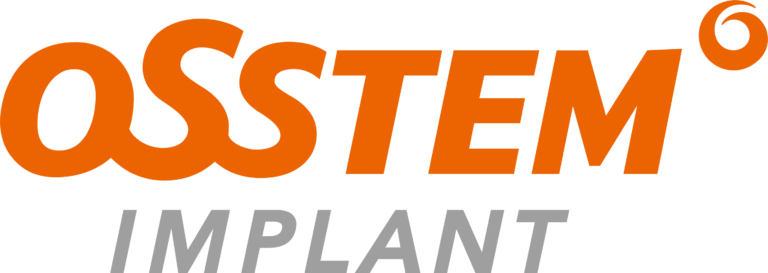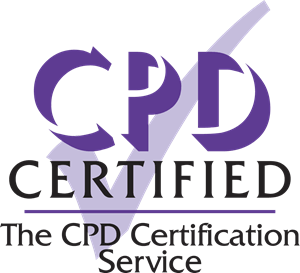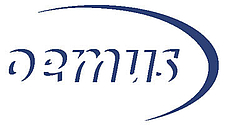Osstem Europe Meeting 2024 – LONDON
We’re thrilled to announce the upcoming Osstem Europe Meeting, which will be held in London, where industry leaders, experts, and enthusiasts convene to explore cutting-edge advancements, share insights, and foster collaborations in the field of dental implantology.
As we gear up for this exciting event, we want to highlight that the signing-up process varies depending on your country of origin. To ensure smooth registration, we encourage attendees to reach out to their respective dealers or subsidiaries.
Session 1
Clinical procedures for favorable immediate implant placement and loading
Moderator: Dr. Mukesh Soni | UK
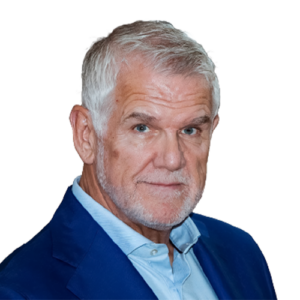
Time of implant positioning: How to reach predictable results
Abstract
The lecture will attempt to evaluate the success, complications, aesthetic outcomes, and patient satisfaction among immediate, immediate-delayed, and delayed implants in post-extractive sockets, as well as whether or not and when augmentation procedures may be found necessary and which, in the hands of the lecturer, is the most effective augmentation technique.Learning outcomes:
- Recognize the potential pitfalls of immediate implant placement into fresh extraction sockets.
- Assess the timing of loading.
- How to avoid complications
- Management of complications
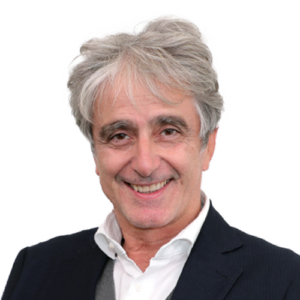
Timing of implant positioning: Do Immediate implants work?
Abstract
The timing of implant positioning is crucial for long-term esthetics and functional results. The aim is to reduce the number of surgeries while at the same time achieving an optimal result, which is a primary goal of implant therapy. On this basis, immediate implants can be considered an optimal therapy to obtain stable and long-term results. The criteria to apply this therapy must be carefully evaluated in order to achieve better results without complications, and the use of new technologies can help surgeons and prosthetists have faster and more reliable results.
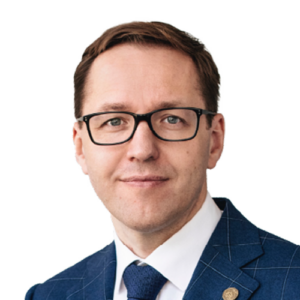
Improving implant prosthodontics through the total fit workflow
Abstract
The success of implant-supported prostheses directly depends on the quality of treatment planning and implementation. Accurate planning and positioning of the implants enable minimal tissue regeneration procedures and simplify prosthetic procedures. Also, final prosthetic components can be fabricated before the surgical procedures and early loading protocols are applied. The integration of digital implantology and prosthodontics is the key to achieving better biological and technical outcomes. This lecture will cover a novel Total Fit Workflow (TFW) concept that helps to significantly increase the efficiency of the digital workflow in implant prosthodontics.
Session 2
Role of bone regeneration in enhancing successful osseointegration
Moderator: Prof. Ieva Gendviliene | Lithuania
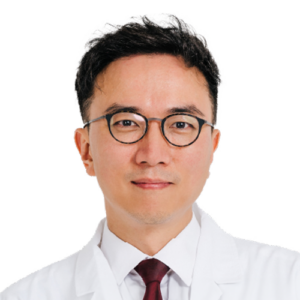
GBR in Implant Dentistry: Essential or Optional?
Abstract
In the dynamic field of implant dentistry, the concept of guided bone regeneration (GBR) has sparked significant debate among clinicians regarding its necessity and relevance in contemporary practice. This session aims to explore the fundamental principles of GBR and its role in enhancing implant success rates and long-term outcomes. Through a comprehensive examination of current evidence and clinical case studies, attendees will gain a deeper understanding of the indications, benefits, and limitations of GBR techniques. Key topics will include the biological rationale behind GBR, surgical protocols, the selection of biomaterials, and the management of complications. Furthermore, the lecture will address common misconceptions surrounding GBR and provide insights into its integration into everyday clinical practice.
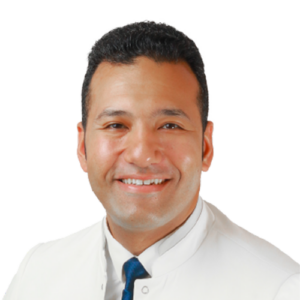
The craft of decision making before, during and after ridge augmentation surgeries
Abstract
Clinicians encounter cases with atrophic alveolar ridges in their daily practice that need complex management, starting from face-driven and prosthetic-driven planning to implant placement and choosing the right approach to restore the peri-implant hard and soft tissues. Ridge augmentation techniques have been out there in the literature for a significant amount of time for us to be able to recognize what works better for each clinical situation using an evidence-based approach. Building expertise in treating alveolar ridge defects enables clinicians to standardize and optimize the outcome of implant therapy and yields superior results with the final restorations in terms of aesthetics, function, and longevity, and that’s why we need guided bone regeneration.
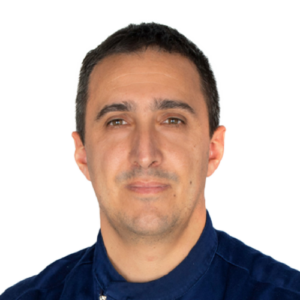
Vertical and horizontal prosthetic and aesthetic Computer Guided Bone Regeneration. Resorbable or not resorbable devices: scientific and clinical evidences
Abstract
The growing interest in biomimetic dental prosthetic restorations has led to the implementation of several bone and soft tissue regeneration procedures. A modern view in terms of alveolar crest reconstruction can't disregard accurate prosthetic & aesthetic planning. The computer-Guided Bone Regeneration Approach is a scientifically supported method that approaches hard & soft tissue augmentation in accordance with 3D aesthetic and prosthetic pre-planning. During this lecture, scientific and clinical evidence on vertical & horizontal alveolar crest bone augmentation will be presented, using resorbable & non-resorbable membranes. In addition, a wide range of clinical cases showing rational choices and future prospects in terms of resorbable customized materials will be presented.
Session 3
Soft tissue stability for optimal esthetic outcomes
Moderator: Dr. Árpád Joób-Fancsaly | Hungary

Implant site soft tissue management prior to augmentation and implant placement.
Abstract
Early studies suggested the application of a mucoperiosteal flap design for sites that require major hard tissue augmentation. It became more crucial to achieve sufficient flap mobilization and tension-free closure when non-resorbable membranes became a standard procedure for major horizontal- or vertical bone augmentation (Tinti & Parma-Benfenati). Other surgical approaches utilized split-thickness flap designs to avoid the severe distortion of the mucogingival junction (Windisch et al.). However, midcrestal soft tissue augmentation could be beneficial to avoid flap dehiscences (Langer). The extraction site development (XSD) technique (Molnar &Windisch) aims to preserve hard- and soft tissue dimensions at severely compromised extraction/ explantation defects (Extraction defect sounding (EDS) class 3 and class 4). A buccally placed barrier membrane is used to reestablish the missing buccal bone wall, to create a safe secluded space for the blood clot. Additionally, an autogenous of xenogeneic soft tissue graft is utilized to improve soft tissue contour at the edentulous ridge. The XSD technique aims to minimize or eliminate the need for subsequent alveolar ridge augmentation. However, if ridge augmentation is still necessary, XSD can create optimal hard and soft tissue conditions, reducing the impact of initial, unfavorable hard- and soft tissue conditions (present at the time of extraction) on the outcome of alveolar ridge augmentation.
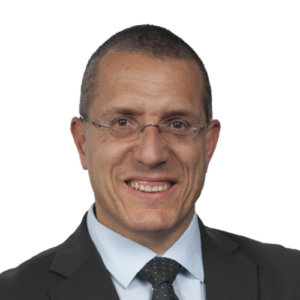
Management of soft tissue complications after implant placement. Etiology and treatment.
Abstract
TBA
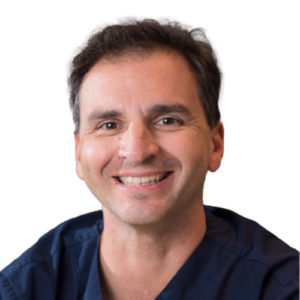
Xenogenous collagenous soft tissue matrices for soft tissue augmentation around implants.
Abstract
The connective tissue graft is still considered the gold standard for soft tissue augmentation around implants. However, this creates an additional surgical site and further patient morbidity. To overcome this, xenogenous collagen matrices have been introduced as replacement grafts for the connective tissue graft. However, we have to understand that they behave and heal differently than autogenous tissues. This lecture will cover the various possibilities and limitations when using such materials for soft tissue augmentation around implants and the necessity of properly utilizing them in order to avoid unwanted clinical outcomes. State-of-the art data will be presented with possibilities and limitations when using these materials for soft tissue augmentation around implants.
Session 4
Discover all benefits from a digital workflow for the treatment of complete edentulous patients
Moderator: Dr. Dr. Matthias Kaupe | Germany
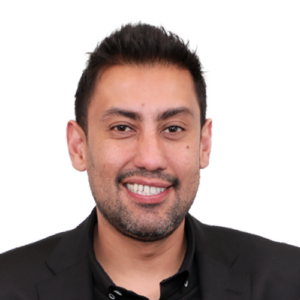
Full-arch dentistry with a focus on analog techniques
Abstract
Comprehensive view of the surgical and essential considerations is vital to complexities inherent in full-arch procedures. Meticulous insights into a thorough pre-assessment and key factors in careful examination, is essential. To achieve optimal function and aesthetics for long-term success and patient satisfaction, both fundamental surgical principles and handling complex cases, techniques like the palatal approach, are critical. The tactile intricacies in bone manipulation, potential challenges in employing a solely digital approach, is discovered by integrating analog and digital methods. The lecture provides a comprehensive multifaceted landscape of full-arch, valuable insights, practical guidance, and essential expertise in this specialized field with precision and proficiency.
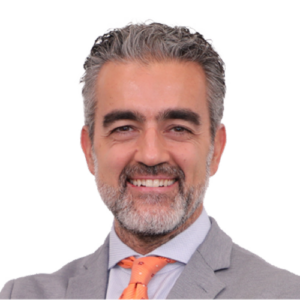
How to restore a terminal dentition: from esthetic diagnosis to follow-ups
Abstract
The restoration of a terminal dentition is a critical task, involving key steps from esthetic diagnosis to subsequent care. Thorough pre-assenemnt diagnosis are crucial for a treatment that considers both the functionality and esthetics. By emphasizing digital technology and clinician’s role, the lecture defines “terminal dentition”, various restorative options, and the whole workflow necessary for predictable full mouth rehabilitations, from data collection to digital face, smile analysis, and planning. The lecture specifically emphasizes implant planning in relation to final prosthesis, follow-up care for the long-term success. By understanding the multifaceted nature of this complex process, dental professionals can deliver optimal functional and esthetic outcomes.

FP1 Full-arch Implant Restorations with Photogrammetry
Abstract
Treatment modalities in FP1 full-arch implant restorations have evolved, with the development of technique and technology progressing from multi-step complex analog procedures to streamlined digital production of immediately loaded 3D-printed prostheses and definitive CAD-CAM restorations. This presentation describes the challenges of full-arch implant intraoral scanning and demonstrates the accuracy of dental photogrammetry. The lecture will introduce current and novel digital workflows for transferring the maxillomandibular relationship for complete arch implant rehabilitation in edentulous jaws. The presentation will conclude by discussing three key factors in PF1 Full-Arch Implant Restorations: hard and soft tissue augmentation, guided surgery, and prosthesis digital design.
Session 5
Gain tips and techniques for the management of implant complications
Moderator: Dr. Kyoungwon Kim | Korea
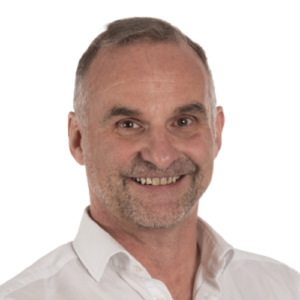
Implant disease
Abstract
Implant failure can be due to a combination of factors. Early failure may be due to a clinical error or the failure of the implant to integrate. Failure by the patient to keep the implant superstructure clean can result in gingival inflammation termed peri-implant mucositis. Late failure is often a result of peri-implantitis. A condition exists called apical peri-implantitis, which, although rare, can either occur due to overheating of the bone during placement or because of infected tissues being left at the apex of the osteotomy site. This lecture will explore the various disease processes affecting dental implants.
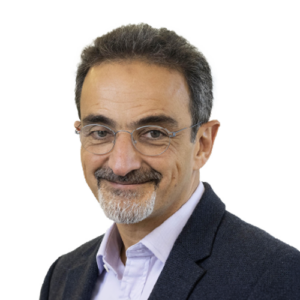
Is there a place for bioactive glass in implant dentistry today?
Abstract
In the current world of innovation and research in biomaterials, there have been limited advancements in the field of guided bone regeneration materials. In this talk, Dr. Barrak will present some of the benefits of bioactive glass in other surgical fields and discuss the potential applications in dental implantology. Although bioactive glass is not a new material, it has been rarely talked about in dental implantology until now! The scientific background and potential clinical applications will be presented by Dr. Barrak.
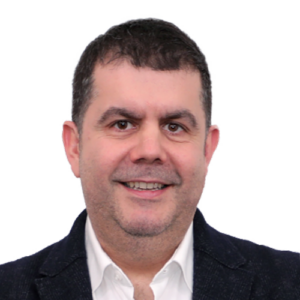
Re-treatment of failed implants: from prevention to advanced hard and soft tissue management
Abstract
Dental implants are a reliable treatment for partially and fully edentulous patients, but the increasing use by diverse practitioners has led to a rise in complications. Implant failure is multifactorial, and risks can be mitigated with better diagnosis and treatment planning. Peri-implantitis, defined by Workgroup 4 of 2017, is a plaque-associated condition causing inflammation and bone loss around implants. Re-treating failed implant sites with severe bone loss from peri-implant disease requires a different approach than initial implant sites. This lecture addresses re-treatment strategies, and key success factors, and provides a clinician's workflow guide, emphasizing prevention as crucial to success.
Session 6
Live Surgery: Advanced Full-Arch Implant Surgery Using Digital Workflow (Immediate Placement and Loading)
Moderator: Prof. David Chong | USA

Advanced Full-Arch Implant Surgery Using Digital Workflow (Immediate Placement and Loading)
Abstract
Advanced Full-Arch Implant Surgery Using Digital Workflow (Immediate Placement and Loading)
Submit your Abstract
Submitting an absract for the Osstem Europe Meeting is an ideal way of making a broader group of colleagues from around the world aware of the work you are doing. For this edition of the OEM London Symposium, all the abstracts must be submitted electronically and will be viewed digitally. Find out more on through the button below.
Pricing:
Early Bird Ticket
- Entrance to the Symposium
- 16+ Speakers & Lectures
- Live Surgery
- Two days filled with educational sessions and lectures designed to elevate your practice
Symposium Ticket
- Entrance to the Symposium
- 16+ Speakers & Lectures
- Live Surgery
- Two days filled with educational sessions and lectures designed to elevate your practice
Gala Ticket
- Entrance to the Gala Dinner
- 3 course Dinner and Welcome Drinks
- Entertainment Show during the Gala Dinner
- Networking opportunities with dental experts and peers
Be sure to ask your local sales representative or dealer for special offers.
There are also special offers for students. For these please contact Osstem Europe directly at info@osstem.eu for more Details.
How to join:
Each country has its own designated points of contact who will facilitate your registration process seamlessly. Whether it’s Osstem in South Korea, Hiossen in the United States, or any other region-specific dealer, they are equipped to assist you every step of the way.
Here’s what you need to do:
- Locate Your Dealer/Subsidiary: Visit our european contact page to find the authorized dealer or subsidiary in your country.
- Get in Touch: Reach out to your local dealer/subsidiary via email or phone to inquire about the registration details.
- Stay Updated: Keep an eye on your email and our official communication channels (LinkedIn | Facebook | Instagram) for updates, agenda releases, and any additional information leading up to the event.
We value your participation and are committed to making your experience at the Osstem Hiossen Meeting enriching and memorable. If you encounter any challenges during the registration process or have inquiries about the event, don’t hesitate to reach out to us or your local dealer/subsidiary for assistance.
We look forward to welcoming you to this unparalleled gathering of dental professionals from around the globe!
FAQ
The OIC Europe is a scientific community with the mission to promote, disseminate and share knowledge of all aspects of dental implantology and related topics. By providing education and research activities, OIC Europe develops the safe and accurate treatment solutions for the benefit of patients and clinicians.
Osstem Implant shares the vision of OIC Europe and supports the activities of OIC Europe, while devoting itself to the continuous R&D of the best products.
OIC Board Member
- President: Prof. Marco Tallarico
- Education Committee Chair: Prof. Árpád Joób-Fancsaly
- Communication Committee Chair: Prof. Ieva Gendviliene
- Science Committee Chair: Prof. Darko Božić
Scientific committee for OHME 2024
- Prof. Marco Tallarico (Italy), President of OIC Europe
- Prof. Darko Bozic (Croatia), President of EFP (European Federation of Periodontology)
- Dr. Arpad Joób-Fancsaly (Hungary), Chair of Education Committee of OIC Europe
- Dr. Fadi Barrak (U.K.), Senior Lecture & Course Lead, MSc in Implantology University of Central Lancashire, U.K.
- Dr. Nikhil Oberai (U.K.), President of OIC U.K.
- Dr. Kyung-won Kim (Korea), Director of Dental Research Institute, Osstem Implant
Partners & Media
